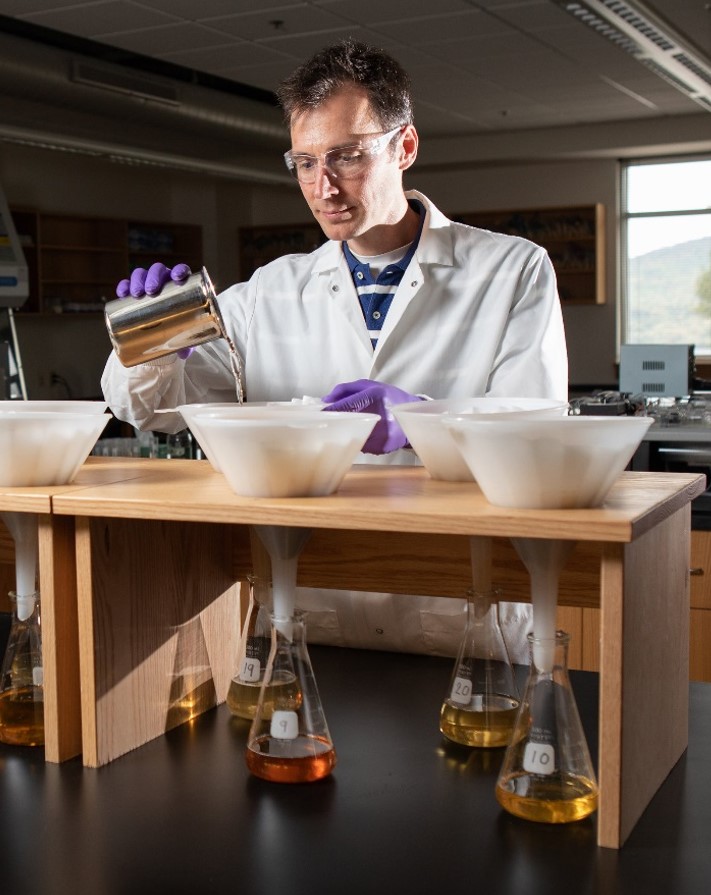By Meghan Howes, Contributing Writer for RadCraft

Since transitioning out of the director’s chair at the Hartwick College Center for Craft Food & Beverage (CCFB), Aaron MacLeod’s work has morphed into a supportive, consultative role as he continues working with malthouses all over North America.
“Without analytics that help with malting process optimization, maltsters are working blind,” said MacLeod. “And prior to 2015, there were no labs providing third party testing at a reasonable cost. It didn’t make financial sense for each of the small-to-midsize malthouses to set up their own lab.” Sending samples to Hartwick’s lab allows malt houses to test their malt using key metrics such as color, extract, and enzyme levels.
Craft malthouses began springing up in the U.S. and Canada around 2008. The Craft Maltsters Guild formed in 2013, and all of the labs – save for the Canadian Malting Barley Technical Centre (CMBTC) in Manitoba – came after. “Malting is continuous learning,” MacLeod stated. “Every year brings new challenges, so we want [Hartwick] to be an ongoing resource.” MacLeod expands further. “We get a good 30,000 ft view, so we can identify trends in the annual quality data, which opens up our ability to create a better picture of what’s happening in each growing region.”
The State of New York drove the economic development engine that, when partnered with the USDA, provided seed funding for the Hartwick lab. The college’s administration saw an opening and a need, and the money was there. “When we tested some of the first grain samples, we understood why some of the malt wasn’t as efficient. The data is what was needed to make decisions about selecting only the best barley for processing.”
Results have been promising. In 2020 alone, 75% of the barley grown in NY was acceptable for malting. “We keep our services affordable by investing in the equipment, writing grants, and utilizing lab automation techniques,” MacLeod said. The Hartwick lab processes a high volume of tests – receiving approximately 60 malt samples per week. Thus far, samples have arrived from 38 states, six provinces, and seven countries. “We brought the model of a commercial malt lab to a not-for-profit setting,” MacLeod continues. “It’s a great story of how universities can have an impact on small business.”
When grain is grown close to a malthouse and, ideally, a brewery (barley is a fickle crop and does not like extended storage times), the value of that product increases exponentially. The Hartwick lab works with close to 300 growers, all small and independent. “The size of a brewery can determine one’s willingness to be creative. Small businesses will try new things and be innovative,” shares MacLeod. Given the growth of craft beer’s malt segment, many have chosen to make the leap to local.
“We want the brewers to articulate their needs to the malthouse,” MacLeod continues, his enthusiasm evident in his tone. “We’re making malt in parts of the country where malting barley hasn’t been grown in a long time, and the Guild helped us to identify a community of small businesses here that we need to support.”
That community aspect is a big part of the culture at Hartwick. “Ours is a lab that everyone can share,” MacLeod concluded. “For a liberal arts college to provide this type of extension-oriented program was very unusual.”
Learn more about the Hartwick College Center for Craft Food and Beverage on their website and follow them on Instagram (@hartwick_ccfb).



You must be logged in to post a comment.